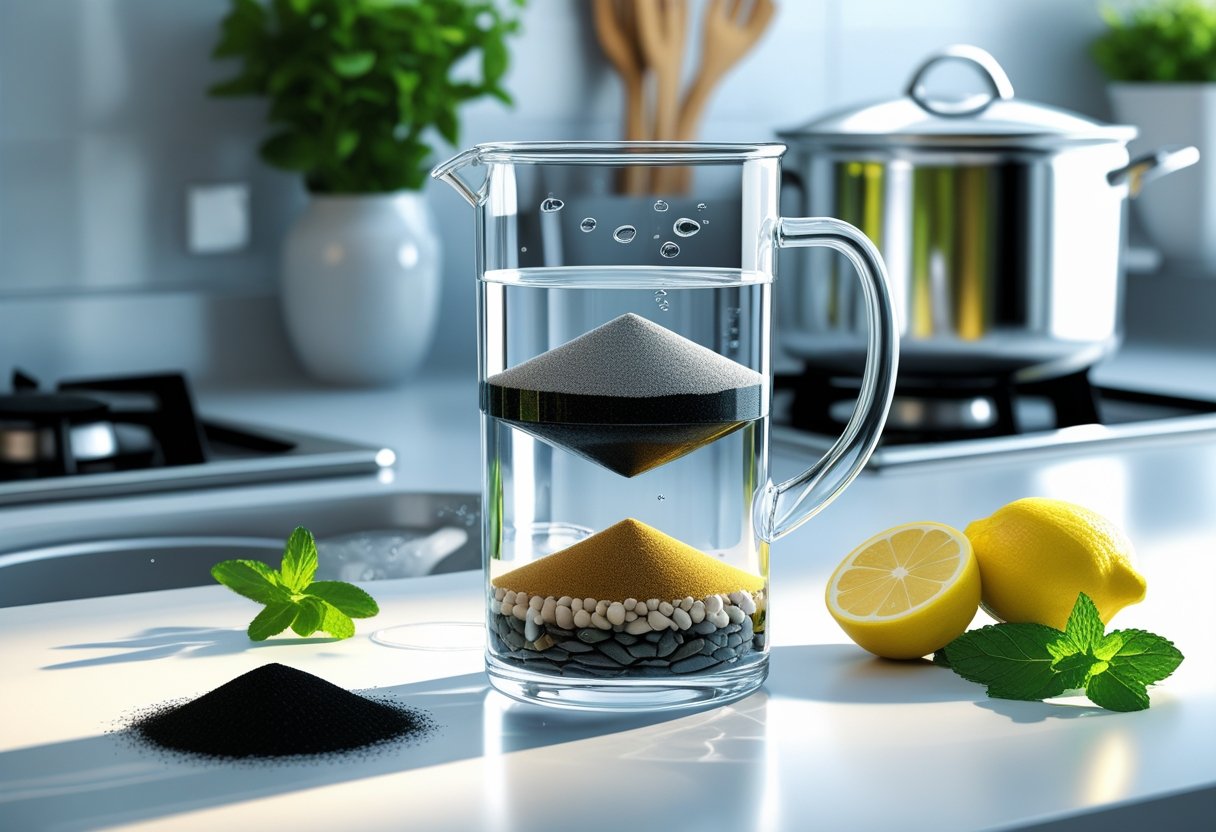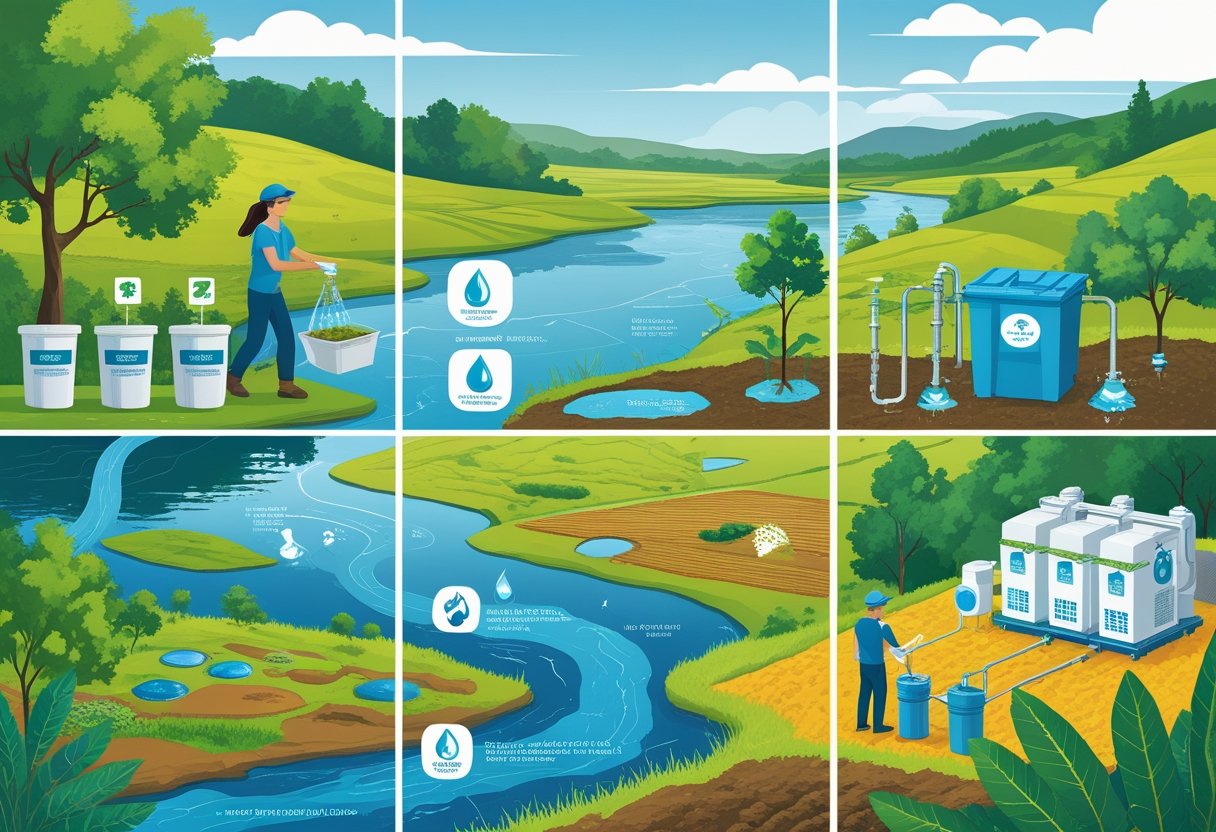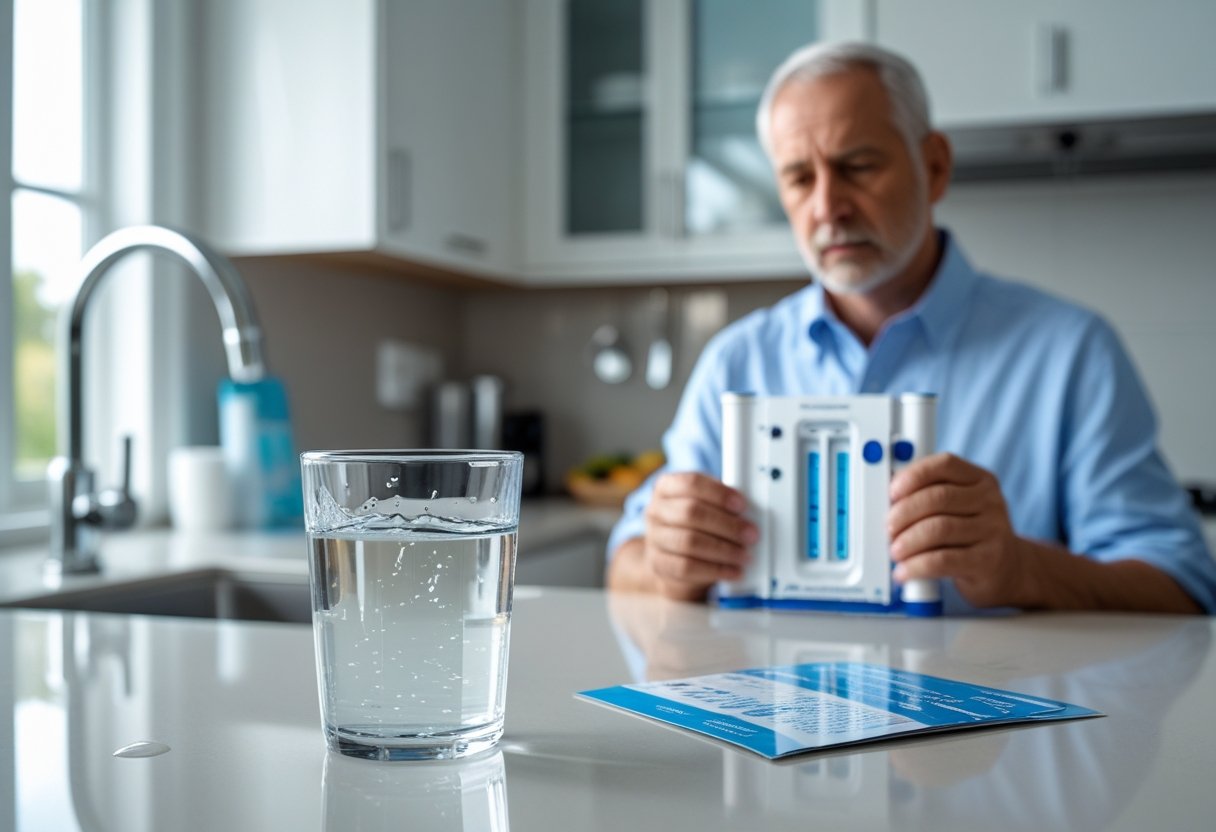Accessing clean water is crucial for your health and well-being. Purifying water at home naturally is a straightforward process that can ensure you have safe drinking water without the need for harsh chemicals. There are several effective methods to achieve this, from boiling to using DIY filtration systems with common household items.
Understanding how to utilize these techniques can empower you to take control of your water quality. Whether you're concerned about contaminants in your tap water or preparing for an outdoor adventure, knowing how to purify water can be a valuable skill. For optimal safety and regulatory compliance regarding water supply, consider the importance of backflow prevention services offered by Pacific Backflow as part of your overall water management strategies.
By incorporating natural purification methods and ensuring that your water systems are properly maintained, you can protect your health while safeguarding your community's water supply. Embrace these techniques to ensure you and your family enjoy the healthiest drinking water possible.
Understanding Water Contaminants and Safety
Contaminated water poses various health risks that can significantly affect your well-being. Knowledge of common contaminants allows you to take the necessary precautions and ensure safe drinking water for your household.
Common Contaminants in Household Water
Household water can harbor numerous contaminants. Biological contaminants include bacteria, viruses, and parasites that can lead to serious health issues. For example, E. coli and cryptosporidium are common pathogens that can enter your water supply from animal waste or untreated water sources.
Chemical contaminants can also be present, including pesticides, heavy metals, and chlorine. These substances can result from agricultural runoff or industrial discharges. Regular testing of your water is crucial to identify these harmful agents and determine their concentrations.
Health Risks of Contaminated Water
Consumption of contaminated water can lead to various health concerns. Diarrhea is one of the most common outcomes associated with waterborne pathogens like E. coli and cryptosporidium, which can severely impact your hydration and overall health.
Prolonged exposure to chemical contaminants may result in chronic conditions, including neurological issues and reproductive problems. Vulnerable populations, such as children and the elderly, are especially at risk. Ensuring water safety in your home is paramount for health maintenance and disease prevention.
Signs Your Water Needs Purification
Recognizing the signs of water contamination is essential. If your water has an unusual taste, odor, or color, it may indicate the presence of harmful substances. Cloudiness or visible particles can also signal contamination.
Frequent illnesses among family members may suggest waterborne pathogens. If you experience symptoms like gastrointestinal distress, consider testing your water supply. Regular maintenance, testing, and responsive services from professionals like Pacific Backflow can help ensure your water remains safe and clean for consumption.
Natural Water Purification Methods for Home Use
There are several effective natural methods for purifying water at home. These techniques are practical, cost-efficient, and environmentally friendly. Let’s explore some of the most accessible methods for ensuring your drinking water is safe.
Boiling Water Effectively
Boiling water is one of the simplest and most effective methods for disinfection. Bring the water to a rolling boil for at least 1-3 minutes. This process effectively kills bacteria, viruses, and protozoa that may be present in the water.
If you are at a higher altitude, you may need to boil for a longer period due to lower boiling temperatures. Make sure to let the water cool before consuming, and store it in a clean, covered container to avoid contamination. This method is essential during emergencies or camping trips when clean water sources are limited.
Solar Disinfection (SODIS)
Solar water disinfection, commonly known as SODIS, utilizes sunlight to purify water. Fill clear plastic bottles with water and place them in direct sunlight for 6 hours on a sunny day, or up to 2 days when it's cloudy. UV rays from the sun effectively kill pathogens in the water.
This method is particularly useful in regions where boiling water may not be feasible. Ensure the bottles are made of PET plastic, which allows UV light to penetrate. SODIS is both an energy-efficient and low-cost method for achieving safer drinking water.
DIY Sand and Gravel Filtration
Creating a sand and gravel filter is another effective DIY method for purifying water. Start by layering various sizes of gravel and sand in a container, with coarser materials at the bottom and fine sand at the top. Pour water through the filter, and the layers will remove larger particles and sediment.
While this method can help improve water clarity, it is essential to follow up with additional disinfection methods, like boiling or chemical treatment, to eliminate pathogens. This filtration system is straightforward and can be built using materials commonly found around the home.
Activated Carbon and Charcoal Filters
Activated carbon filters are highly effective for removing impurities, odors, and chemicals from water. You can use activated charcoal made from coconut shells, coal, or wood. Place the activated carbon in a clean container and pour water through it to enhance its taste and smell.
This method does not kill bacteria, so it’s best used in combination with boiling or another disinfection method. Many households find using activated carbon filters an easy way to improve their water quality. Regular replacement of the carbon will ensure the filter maintains its effectiveness over time.
Implementing these natural water purification methods can help you ensure safe drinking water at home. For more comprehensive solutions or services, trust Pacific Backflow for reliable backflow testing and support. Your commitment to water safety can make all the difference.
Alternative Household Water Purification Techniques
There are various methods to purify water at home naturally. Utilizing simple, household items can effectively ensure clean drinking water. Below are some effective techniques to consider.
Using Moringa Seeds for Water Purification
Moringa seeds are known for their natural coagulant properties. When crushed and added to contaminated water, the seeds help gather impurities, making them easier to remove. The process involves:
- Preparation: Crush dried moringa seeds to a fine powder.
- Mixing: Add about 1 seed per liter of water, stirring the mixture thoroughly.
- Settling: Allow the water to sit for several hours so that impurities settle at the bottom.
Afterward, carefully decant the clear water, leaving impurities behind. Moringa seed purification is both eco-friendly and effective, making it a great option for home use.
Ceramic Filters and Clay Pot Methods
Ceramic filters are common for household water purification. These filters contain tiny pores that physically block contaminants. To use a ceramic filter:
- Setup: Place the filter in a clean container.
- Filtration: Pour the water through, allowing it to pass through the ceramic.
Alternatively, clay pots can serve as natural filters. Here’s how:
- Sourcing Clay Pots: Use unglazed clay pots to ensure proper filtration.
- Water Addition: Fill the pot with water and let it sit. The porous nature of clay releases filtered water slowly.
Both methods can significantly reduce turbidity and harmful microbes in your drinking water.
Improvised Water Filtration Systems
Creating an improvised water filtration system can be done using common materials. You can effectively filter water by layering:
- Materials Needed: Clean gravel, sand, charcoal, and a container.
- Layering: Start with gravel at the bottom, followed by sand, and then activated charcoal.
Pour the contaminated water through the layers, which will trap sediments and impurities. Collect the filtered water from the bottom. This system mimics professional water filters and can be a lifesaver in emergencies. Always ensure to follow up this method with boiling or additional purification for safety.
For any backflow testing or installations to ensure your water supply remains safe, consider reaching out to Pacific Backflow, serving all of San Diego County.
Chemical-Free Water Disinfection Options
You have various strategies to purify water without relying on chemicals. These methods are not only effective but also eco-friendly, ensuring that your drinking water remains safe and healthy.
Water Purification Without Bleach or Iodine
When looking for alternatives to chemical treatments like bleach or iodine, consider methods such as boiling, filtration, and natural UV purification. Boiling water for at least one minute kills bacteria and viruses effectively.
Natural filters can be created using materials such as sand, charcoal, and gravel layered in a container. This homemade filter can trap particulate matter and some contaminants. Additionally, placing water in clear bottles and exposing them to sunlight for several hours can utilize UV rays to disinfect water naturally.
Solar Still Construction for Emergency Water
A solar still is a simple and effective way to purify water using sunlight. To construct one, you’ll need a shallow container filled with contaminated water, a larger container to catch distilled water, and a clear plastic sheet.
- Setup: Place the smaller container in the center of the larger one and fill the larger container with contaminated water.
- Cover: Stretch the plastic sheet over the top, ensuring it’s sealed around the edges, with a small rock in the center of the sheet to create a low point.
- Condensation: As sunlight heats the water, evaporation occurs, and the water vapor condenses on the underside of the plastic sheet, dripping into the clean container. This method is effective in emergency situations or off-grid living.
Water Softening Using Natural Ingredients
If your water is hard, natural water softeners can be an effective solution. Baking soda and vinegar are common household items that can help reduce hardness.
- Baking Soda Method: Add half a teaspoon of baking soda to each gallon of water.
- Vinegar Method: Add a cup of vinegar for every 5 gallons of water; this can further prevent scale buildup and improve water quality.
Using these natural ingredients can ensure that the water is not only softened but also remains chemical-free, making it safe for drinking and other uses. This approach aligns well with sustainable living practices.
For assistance in ensuring your water system is functioning correctly, consider the professional services from Pacific Backflow. They offer reliable testing and repairs that are essential for maintaining clean water supplies.
Comparing Home Water Filtration and Purification Products
When evaluating options for ensuring clean and safe drinking water at home, understanding the distinctions among water filtration and purification methods is vital. This section will focus on reverse osmosis systems, tips for choosing the right water filter, and the limitations of store-bought solutions.
Reverse Osmosis for Home Use
Reverse osmosis (RO) systems are highly effective for home water purification. These systems use a semipermeable membrane to remove impurities, including heavy metals, bacteria, and chemicals. By applying pressure to push tap water through the membrane, the process separates clean water from contaminants.
RO systems typically include multiple filtration stages, such as pre-filters and post-filters, enhancing the overall purification process. While they are excellent for improving water quality, they can be relatively expensive to install and maintain.
Consider also that RO systems waste a certain amount of water during the purification process, generally between 3 to 4 gallons for every gallon purified. This inefficiency can be a drawback in areas facing water scarcity.
Choosing the Right Water Filter
Selecting the appropriate water filter for your home involves understanding your specific needs and the characteristics of your water supply. Look for filters that effectively target known contaminants in your water, which you can often find through local water quality reports.
Filters come in various types, including activated carbon, ceramic, and UV systems. Activated carbon filters are popular for removing chlorine taste and odor but may not eliminate all pathogens. Ceramic filters excel at filtering out bacteria but can be less effective against chemical contaminants.
When choosing a filter, consider factors such as flow rate, filter lifespan, and maintenance requirements. Purchasing from a trusted provider, like Pacific Backflow, ensures you receive reliable information and quality products tailored to your needs.
Limitations of Store-Bought Solutions
While store-bought water filtration and purification solutions are convenient, they often have limitations. Many residential water filters lack comprehensive purification capabilities and may only reduce certain contaminants. It's essential to read product specifications carefully to understand what impurities a filter can or cannot remove.
Additionally, some smaller or portable purification systems, such as water purification tablets, can be effective for emergency situations but are not ideal for regular household use. These tablets may not remove all harmful pathogens and can leave an unpleasant taste.
In some cases, relying solely on easy-to-find products can lead to false security regarding water quality. Regularly testing your water supply and consulting with specialists can provide you with better insights into necessary solutions.
Best Practices for Maintaining Safe Drinking Water at Home
Maintaining safe drinking water at home requires regular testing and preventive measures to avoid contamination. Understanding these practices ensures that your water supply remains clean and healthy for your family.
Routine Water Testing
Conducting regular water tests is essential for ensuring that your drinking water is free from harmful contaminants. You should test your water at least once a year, especially if you have a private well or live in an area prone to pollution.
Use home water testing kits or send samples to certified laboratories for accurate results. Look for indicators such as pH levels, bacteria, heavy metals, and chemical contaminants.
If you discover any issues, consider contacting professionals like Pacific Backflow for assistance in addressing any potential problems and maintaining compliance with local regulations. Regular testing not only protects your health but also gives you peace of mind regarding your water quality.
Preventing Recontamination of Purified Water
After purifying water at home, take steps to prevent recontamination. Store your purified water in clean, food-safe containers, and avoid exposing it to direct sunlight, which can promote bacterial growth.
Ensure that your water filtration systems undergo regular maintenance and replacement of filters as recommended by the manufacturer. This ensures that they function effectively without introducing new contaminants.
Keep your faucets and water dispensing areas clean. Implement a routine cleaning schedule for any surfaces that come into contact with drinking water. By following these practices, you help maintain water safety and ensure your supply remains clean and safe for consumption.
Frequently Asked Questions
When it comes to purifying water at home, you might have various concerns and methods in mind. These questions can help you navigate effective techniques to ensure clean drinking water using natural methods.
What are effective natural methods for purifying drinking water at home?
Effective natural methods include boiling, using activated charcoal, and employing sand and gravel filtration. Boiling water for at least one minute eliminates pathogens effectively. Activated charcoal can absorb various contaminants, while a layered sand and gravel filter can remove larger particles.
How can I make a water filter at home using a bottle?
To create a water filter using a plastic bottle, cut the bottom off and invert it. Layer it with gravel, sand, and activated charcoal. Pour the water through the filter; this system will help remove impurities and improve taste. Remember to replace the filter media regularly for best results.
What are dependable methods to decontaminate tap water without boiling?
If boiling isn't an option, using water purification tablets or filters designed for heavy metals and bacteria is reliable. You can also try adding a small amount of unscented liquid bleach (6-8 drops per gallon) to kill pathogens, allowing it to sit for 30 minutes before consumption.
In what ways can I purify my water at home without using chemicals or a filter?
You can purify your water without chemicals or filters through natural options like solar disinfection. Placing clear bottles of water in direct sunlight for six hours can kill pathogens. Additionally, using a cloth to strain water can help remove larger particulates.
What proven techniques exist for removing impurities from water naturally?
Proven techniques include sedimentation, where you let water sit for a few hours to allow heavier particles to settle at the bottom. Additionally, using a basic charcoal filter effectively removes various chemical impurities and improves taste without harsh treatments.
How do you DIY a water purification system without relying on commercial products?
To create a DIY water purification system, consider a multi-layered approach that combines sedimentation, filtration, and activated charcoal. You can use a bucket system where water flows through different layers of coarse sand, fine sand, and charcoal, ensuring it is filtered effectively before use.











